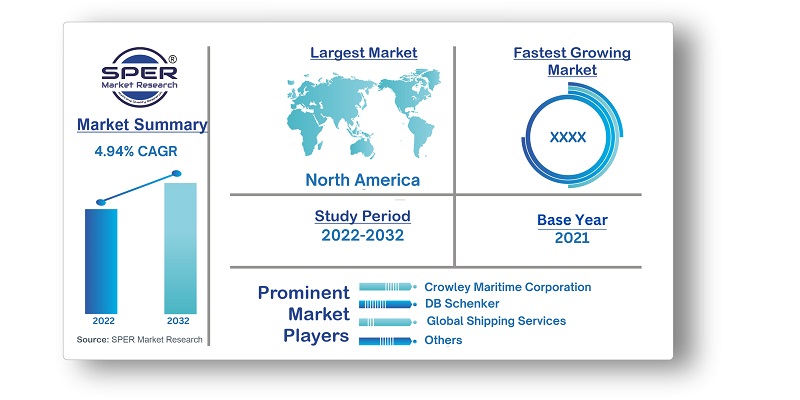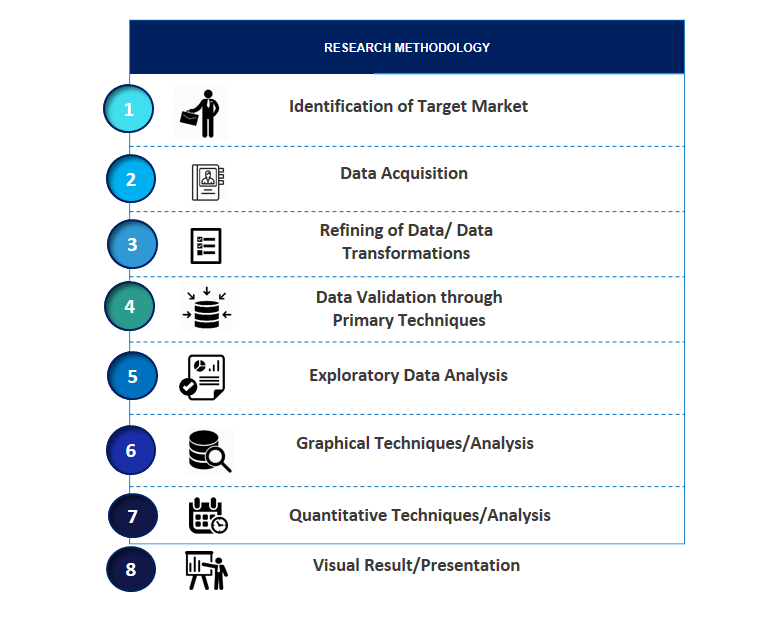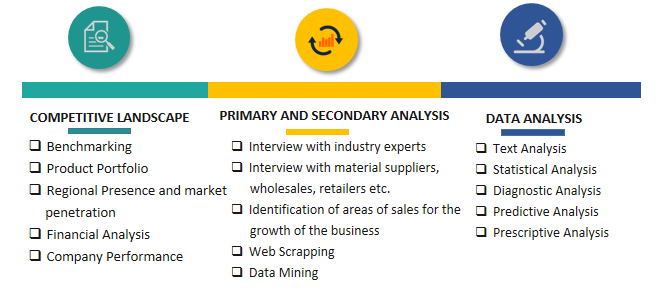Cargo Transportation Market Introduction and Overview
According to SPER Market Research, the Global Cargo Transportation Market is estimated to reach USD 19.31 billion by 2032 with a CAGR of 4.94%.
The report includes an in-depth analysis of the global Cargo Transportation market, including market size and trends, Procedure mix, distribution channels, and supplier analysis. Cargo transportation refers to the movement of goods or merchandise from one location to another using various modes of transportation, such as trucks, ships, trains, or airplanes. It involves the logistics and management of transporting cargo efficiently and securely to its intended destination.
- Globalization and international trade: The increasing interconnectedness of economies and the rise in international trade drive the demand for cargo transportation services to facilitate the movement of goods across borders.
- E-commerce expansion: The rapid growth of e-commerce has significantly increased the need for efficient and timely transportation of goods, driving the demand for cargo transportation services.

Market Opportunities and Challenges
The global cargo transportation market is driven by factors such as globalization and international trade, as economies become more interconnected and require efficient movement of goods across borders. The rapid expansion of e-commerce has amplified the need for timely and efficient transportation services. Investments in transportation infrastructure, including ports and airports, improve connectivity and efficiency. Additionally, the outsourcing of logistics activities by companies increases the demand for cargo transportation services provided by third-party logistics providers. These drivers collectively contribute to the growth and expansion of the global cargo transportation market.
However, the global cargo transportation market faces challenges including infrastructure limitations, regulatory complexities, security risks, and environmental concerns. Insufficient transportation infrastructure, regulatory compliance complexities, security breaches, and environmental impact pose hurdles to the efficient and sustainable movement of goods. Overcoming these challenges requires investment in infrastructure, streamlined regulations, enhanced security measures, and sustainable practices to ensure the smooth functioning of the cargo transportation market.
-007503614082023.jpg)
Market Competitive Landscape
The global Cargo Transportation is characterized by high competition, with multiple players operating in the industry. The key players in the global Cargo Transportation market include Expeditors International, Orient Overseas Container Line Limited, Dextra Group, Schumacher Cargo Logistics, Global Shipping Services, LLC, TAD Group, Crowley Maritime Corporation, ISDB Logistik GmbH, R Group, DB Schenker, IB Cargo, PANALPINA WORLD TRANSPORT (HOLDING) LTD, APL, Lynden STA Logistic, DSV, Others.
Scope of the Report:
| Report Metric | Details |
| Market size available for years | 2019-2032 |
| Base year considered | 2021 |
| Forecast period | 2022-2032 |
| Segments covered | By Mode of Transportation, By Deployment, By Solution, End-Use Industry
|
| Regions covered | North America, Asia-Pacific, Latin America, Middle East & Africa and Europe
|
| Companies Covered | Expeditors International, Orient Overseas Container Line Limited, Dextra Group, Schumacher Cargo Logistics, Global Shipping Services, LLC, TAD Group, Crowley Maritime Corporation, ISDB Logistik GmbH, R Group, DB Schenker, IB Cargo, PANALPINA WORLD TRANSPORT (HOLDING) LTD, APL, Lynden STA Logistic, DSV, Others
|
COVID-19 Impact on Global Cargo Transportation Market
The COVID-19 pandemic has posed safety measures and operational challenges for cargo transportation companies, including implementing sanitization protocols, social distancing, and reduced staffing levels. Trade restrictions and border closures disrupted the flow of goods, especially in cross-border operations. Uncertainty and market volatility created challenges in planning and forecasting due to fluctuating fuel prices and exchange rates. However, cargo transportation plays a crucial role in distributing vaccines, medical supplies, and aiding economic recovery. The industry's ability to adapt and build resilience will be vital for future growth as ongoing challenges and opportunities emerge.
Key Target Audience
- Companies involved in international trade
- Freight forwarders and logistics providers
- Importers and exporters
- Retailers and e-commerce companies
- Shipping and freight companies
- Supply chain professionals and consultants
- Third-party logistics (3PL) providers
- Others
Our in-depth analysis of the Cargo Transportation Market includes the following segments:
|
By Mode of Transportation:
|
Rail Transportation
Road Transportation
Seaborne Transportation
Air Transportation
|
|
By Deployment:
|
Cloud
On-Premise
|
|
By Solution:
|
Transportation Cost Management
Transportation Security and Monitoring System
Transportation Mobility Solution
Warehouse Management System
Transportation 3PL Solutions
Other Solutions
|
|
By End-Use Industry:
|
Aerospace and Defense
Automotive
Consumer and Retail
Energy and Power
Food and Beverage
Oil and Gas
Other End User
|
Key Topics Covered in the Report
- Global Cargo Transportation Market Size (FY’2022-FY’2032)
- Overview of Global Cargo Transportation Market
- Segmentation of Global Cargo Transportation Market By Mode of Transportation (Rail Transportation, Road Transportation, Seaborne Transportation, Air Transportation)
- Segmentation of Global Cargo Transportation Market By Deployment (On-Premise, Cloud)
- Segmentation of Global Cargo Transportation Market By Solution (Transportation Security and Monitoring System, Warehouse Management System, Transportation Mobility Solution, Transportation Cost Management, Transportation 3PL Solutions, Other Solutions)
- Segmentation of Global Cargo Transportation Market By End-Use Industry (Aerospace and Defence, Automotive, Consumer and Retail, Energy and Power, Food and Beverage, Oil and Gas, Other End User)
- Statistical Snap of Global Cargo Transportation Market
- Expansion Analysis of Global Cargo Transportation Market
- Problems and Obstacles in Global Cargo Transportation Market
- Competitive Landscape in the Global Cargo Transportation Market
- Impact of COVID-19 and Demonetization on Global Cargo Transportation Market
- Details on Current Investment in Global Cargo Transportation Market
- Competitive Analysis of Global Cargo Transportation Market
- Prominent Players in the Global Cargo Transportation Market
- SWOT Analysis of Global Cargo Transportation Market
- Global Cargo Transportation Market Future Outlook and Projections (FY’2022-FY’2032)
- Recommendations from Analyst
1. Introduction
1.1. Scope of the report
1.2. Market segment analysis
2. Research Methodology
2.1 Research data source
2.1.1 Secondary data
2.1.2 Primary data
2.1.3 SPER’s internal database
2.1.4 Premium insight from KOL’s
2.2 Market size estimation
2.2.1 Top-down and Bottom-up approach
2.3 Data triangulation
3. Executive Summary
4. Market Dynamics
4.1. Driver, Restraint, Opportunity and Challenges analysis
4.1.1 Drivers
4.1.2 Restraints
4.1.3 Opportunities
4.1.4 Challenges
4.2. COVID-19 Impacts of the Global Cargo Transportation Market
5. Market variables and outlook
5.1. SWOT analysis
5.1.1 Strengths
5.1.2 Weaknesses
5.1.3 Opportunities
5.1.4 Threats
5.2. PESTEL analysis
5.2.1 Political landscape
5.2.2 Economic landscape
5.2.3 Social landscape
5.2.4 Technological landscape
5.2.5 Environmental landscape
5.2.6 Legal landscape
5.3. PORTER’S five forces analysis
5.3.1 Bargaining power of suppliers
5.3.2 Bargaining power of Buyers
5.3.3 Threat of Substitute
5.3.4 Threat of new entrant
5.3.5 Competitive rivalry
5.4. Heat map analysis
6. Competitive Landscape
6.1 Global Cargo Transportation Equipment Manufacturing Base Distribution, Sales Area, Product Type
6.2 Mergers & Acquisitions, Partnerships, Product Launch, and Collaboration in Global Cargo Transportation Market
7. Global Cargo Transportation Market, By Mode of Transportation, 2019-2032 (USD Million)
7.1 Rail Transportation
7.2 Road Transportation
7.3 Seaborne Transportation
7.4 Air Transportation
8. Global Cargo Transportation Market, By Deployment, 2019-2032 (USD Million)
8.1 Cloud
8.2 On-Premise
9. Global Cargo Transportation Market, By Solution, 2019-2032 (USD Million)
9.1 Transportation Cost Management
9.2 Transportation Security and Monitoring System
9.3 Transportation Mobility Solution
9.4 Warehouse Management System
9.5 Transportation 3PL Solutions
9.6 Other Solutions
10. Global Cargo Transportation Market, By End-Use Industry, 2019-2032 (USD Million)
10.1 Aerospace and Defense
10.2 Automotive
10.3 Consumer and Retail
10.4 Energy and Power
10.5 Food and Beverage
10.6 Oil and Gas
10.7 Other End User
11.Global Cargo Transportation Market, By Region, 2019-2032 (USD Million)
11.1 Global Cargo Transportation Market and Market Share by Region (2019-2025)
11.2 Global Cargo Transportation Market and Market Share by Region (2026-2032)
11.3 Asia-Pacific
11.3.1 Australia
11.3.2 China
11.3.3 India
11.3.4 Japan
11.3.5 South Korea
11.3.6 Rest of Asia-Pacific
11.4 Europe
11.4.1 France
11.4.2 Germany
11.4.3 Italy
11.4.4 Spain
11.4.5 United Kingdom
11.4.6 Rest of Europe
11.5 Middle East and Africa
11.5.1 Kingdom of Saudi Arabia
11.5.2 United Arab Emirates
11.5.3 Rest of Middle East & Africa
11.6 North America
11.6.1 Canada
11.6.2 Mexico
11.6.3 United States
11.7 Latin America
11.7.1 Argentina
11.7.2 Brazil
11.7.3 Rest of Latin America
12.Company Profiles
12.1 Amerijet International
12.1.1 Company details
12.1.2 Financial outlook
12.1.3 Product summary
12.1.4 Recent developments
12.2 APL
12.2.1 Company details
12.2.2 Financial outlook
12.2.3 Product summary
12.2.4 Recent developments
12.3 Crowley Maritime Corporation
12.3.1 Company details
12.3.2 Financial outlook
12.3.3 Product summary
12.3.4 Recent developments
12.4 DB Schenker
12.4.1 Company details
12.4.2 Financial outlook
12.4.3 Product summary
12.4.4 Recent developments
12.5 DSV
12.5.1 Company details
12.5.2 Financial outlook
12.5.3 Product summary
12.5.4 Recent developments
12.6 Expeditors International
12.6.1 Company details
12.6.2 Financial outlook
12.6.3 Product summary
12.6.4 Recent developments
12.7 Global Shipping Services, LLC
12.7.1 Company details
12.7.2 Financial outlook
12.7.3 Product summary
12.7.4 Recent developments
12.8 IB Cargo
12.8.1 Company details
12.8.2 Financial outlook
12.8.3 Product summary
12.8.4 Recent developments
12.9 ISDB Logistik GmbH
12.9.1 Company details
12.9.2 Financial outlook
12.9.3 Product summary
12.9.4 Recent developments
12.10 Lynden STA Logistic
12.10.1 Company details
12.10.2 Financial outlook
12.10.3 Product summary
12.10.4 Recent development
12.11 Orient STA Logistic
12.11.1 Company details
12.11.2 Financial outlook
12.11.3 Product summary
12.11.4 Recent developments
12.12 Orient Overseas Container Line Limited
12.12.1 Company details
12.12.2 Financial outlook
12.12.3 Product summary
12.12.4 Recent developments
12.13 Panalpina World Transport (Holding) LTD
12.13.1 Company details
12.13.2 Financial outlook
12.13.3 Product summary
12.13.4 Recent developments
12.14 R Group
12.14.1 Company details
12.14.2 Financial outlook
12.14.3 Product summary
12.14.4 Recent developments
12.15 Schumacher Cargo Logistics
12.15.1 Company details
12.15.2 Financial outlook
12.15.3 Product summary
12.15.4 Recent developments
12.16 TAD Group
12.16.1 Company details
12.16.2 Financial outlook
12.16.3 Product summary
12.16.4 Recent developments
13.List of Abbreviations
14.Reference Links
15.Conclusion
16.Research Scope
SPER Market Research’s methodology uses great emphasis on primary research to ensure that the market intelligence insights are up to date, reliable and accurate. Primary interviews are done with players involved in each phase of a supply chain to analyze the market forecasting. The secondary research method is used to help you fully understand how the future markets and the spending patterns look likes.
The report is based on in-depth qualitative and quantitative analysis of the Product Market. The quantitative analysis involves the application of various projection and sampling techniques. The qualitative analysis involves primary interviews, surveys, and vendor briefings. The data gathered as a result of these processes are validated through experts opinion. Our research methodology entails an ideal mixture of primary and secondary initiatives.


